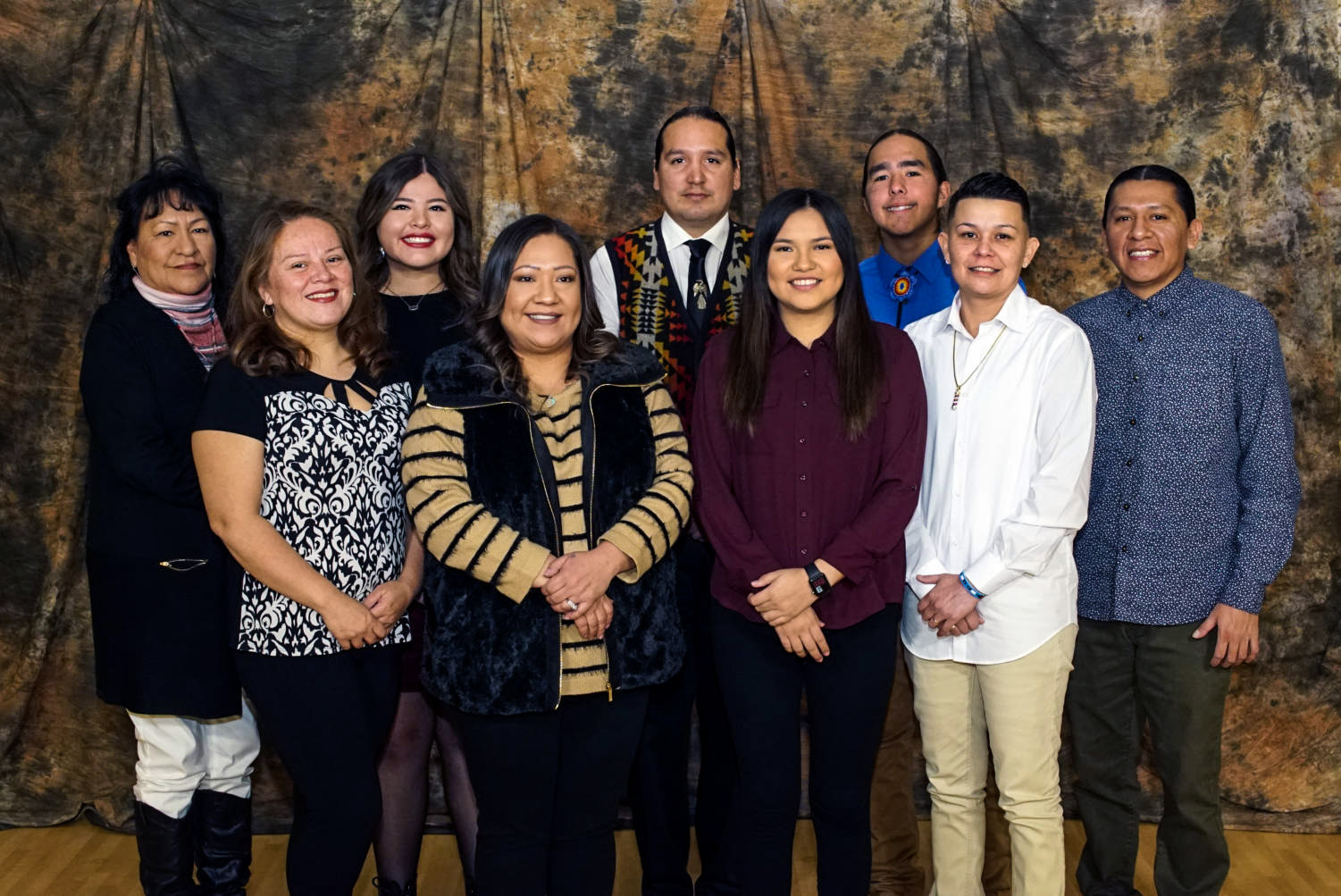Indianz.Com > News > Gaylord News: American Rescue Plan provides $20 million for Native languages

Tribal efforts to preserve languages get boost from COVID relief funds
Monday, April 5, 2021
By Nancy Marie Spears
Gaylord News
Justin Neely, director of language for the
Citizen Potawatomi Nation
in Oklahoma, grew up among elders who told him that if the Potawatomi language is lost, so are the Potawatomi people.
Now, elders who speak those Native languages are dying from COVID-19 and its complications at much higher rates than white populations.
Neely compared the death of a tribal language speaker to a library burning down. He said there are seven unique tribes of Potawatomi in the United States. And among all Potawatomi, fewer than 10 first-language speakers were alive when the pandemic struck, and some might have died in the past year.
A first-language speaker is someone who grew up speaking a tribal language. Second-language speakers learned a Native tongue as a second language.
The American Rescue Plan, which allocates $31 billion to the tribes nationwide, set aside $20 million to help Native American nations preserve their languages. The funding is designed to help assure the survival of tribal cultures, spiritual identities and forms of traditional communication. Normally, the 574 federally-recognized tribes – along with colleges, museums and youth centers that teach Native languages – must compete with one another for federal funding that targets language preservation. There are no fluent speakers of Arapaho left in Oklahoma, said James Sleeper, an Arapaho lead apprentice, and there might be only 10 or 15 first-language Cheyenne speakers left. “We have less than 1,000 first-language speakers, our loss (during the pandemic) has been approximately 100 first-language speakers out of a population of 200,00 tribal members,” said Teresa Billy, assistant director of education services for the Choctaw Nation. “This could very well be defined as a crisis for the preservation of our language.” Tribes are often oral societies, Neely said, and because not every speaker is knowledgeable on every aspect of the culture, losing just one speaker leaves a permanent hole in the tribes’ cultures, communities and identities. “One might be an avid fisherman and knows lots of terminology and concepts to deal with fishing,” Neely said. “One might be an avid basketmaker. One might be a gardener and know different terminologies for certain plants. Or somebody who deals with medicine and knows different herbs and ways to treat different ailments. “So, you know, just losing one speaker has a devastating effect on Native people.”Have you wanted to learn the Potawatomi language? Citizen Potawatomi Nation's Cultural Heritage Center's new website has some amazing online resources to get you started! Visit https://t.co/YriB0Pi5vv!
— Citizen Potawatomi (@c_p_n) March 30, 2021
Note: This story originally appeared on Cronkite News. It is published via a Creative Commons license. Cronkite News is produced by the Walter Cronkite School of Journalism and Mass Communication at Arizona State University.
Search
Filed Under
Tags
More Headlines
Defense bill snubs Indian Country in favor of Lumbee federal recognition
NAFOA: 5 Things You Need to Know this Week (December 8, 2025)
Chuck Hoskin: Cherokee Nation benefits from extension of health care credits
Native America Calling: Tribal museums reflect on tumultuous year, chart their next steps
Press Release: National Museum of the American Indian hosts Native art market
AUDIO: Sea Lion Predation in the Pacific Northwest
Native America Calling: Tribal colleges see an uncertain federal funding road ahead
Native America Calling: Short films taking on big stories
Native America Calling: Advocates push back against new obstacles to Missing and Murdered Indigenous Relatives momentum
Native America Calling: For all its promise, AI is a potential threat to culture
NAFOA: 5 Things You Need to Know this Week (November 24, 2025)
Chuck Hoskin: Cherokee Nation invests in rural transportation
Native America Calling: Native candidates make strides in local elections
National Congress of American Indians returns incumbents and welcomes newcomers to leadership
National Congress of American Indians chooses leadership at big convention
More Headlines
NAFOA: 5 Things You Need to Know this Week (December 8, 2025)
Chuck Hoskin: Cherokee Nation benefits from extension of health care credits
Native America Calling: Tribal museums reflect on tumultuous year, chart their next steps
Press Release: National Museum of the American Indian hosts Native art market
AUDIO: Sea Lion Predation in the Pacific Northwest
Native America Calling: Tribal colleges see an uncertain federal funding road ahead
Native America Calling: Short films taking on big stories
Native America Calling: Advocates push back against new obstacles to Missing and Murdered Indigenous Relatives momentum
Native America Calling: For all its promise, AI is a potential threat to culture
NAFOA: 5 Things You Need to Know this Week (November 24, 2025)
Chuck Hoskin: Cherokee Nation invests in rural transportation
Native America Calling: Native candidates make strides in local elections
National Congress of American Indians returns incumbents and welcomes newcomers to leadership
National Congress of American Indians chooses leadership at big convention
More Headlines